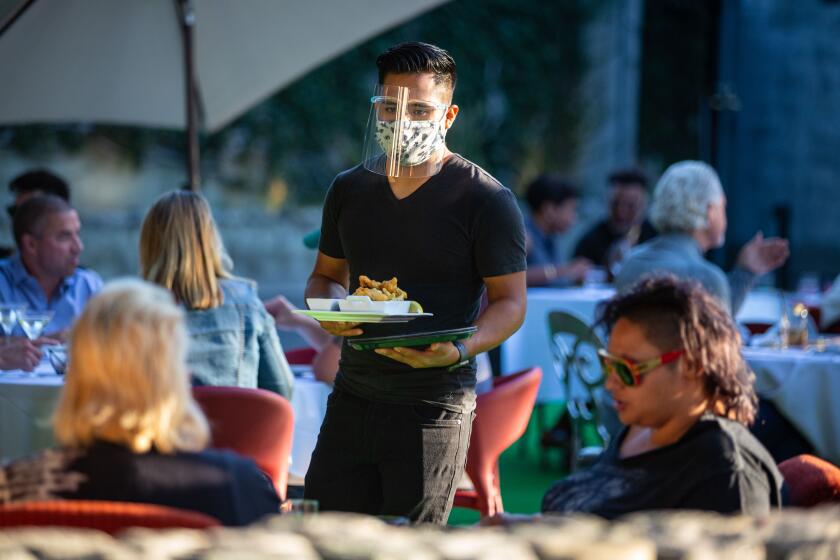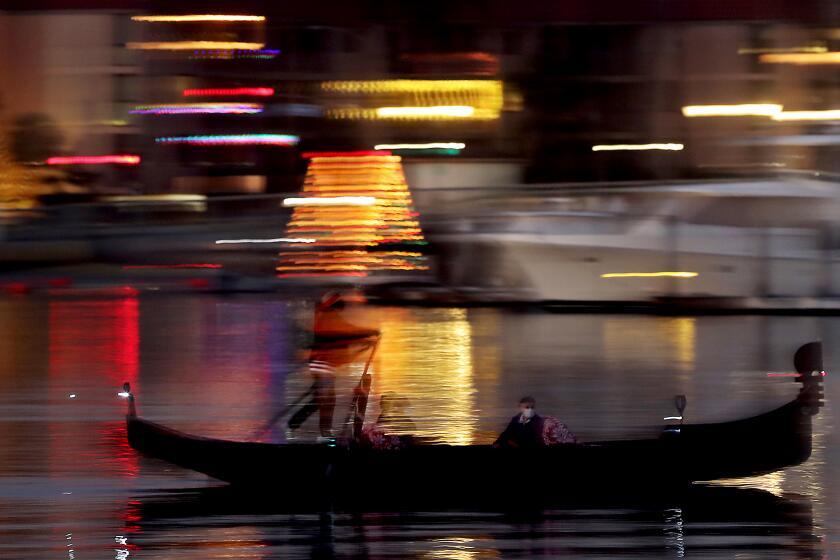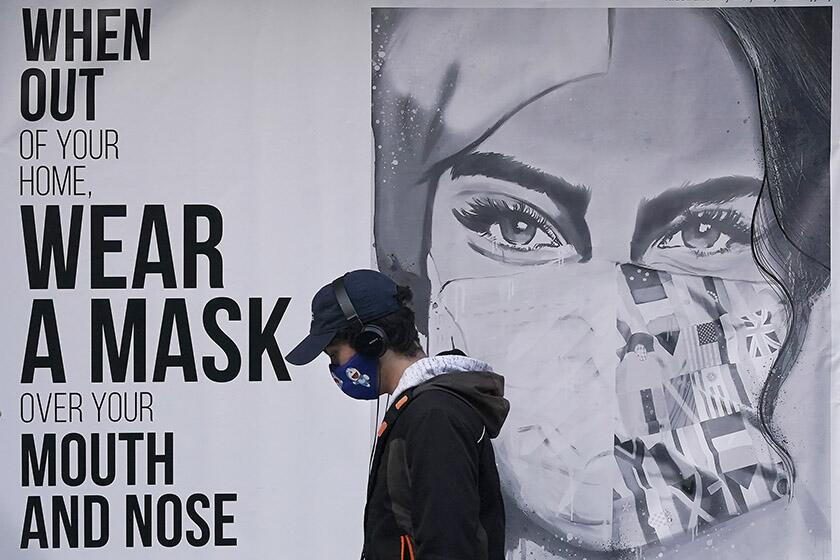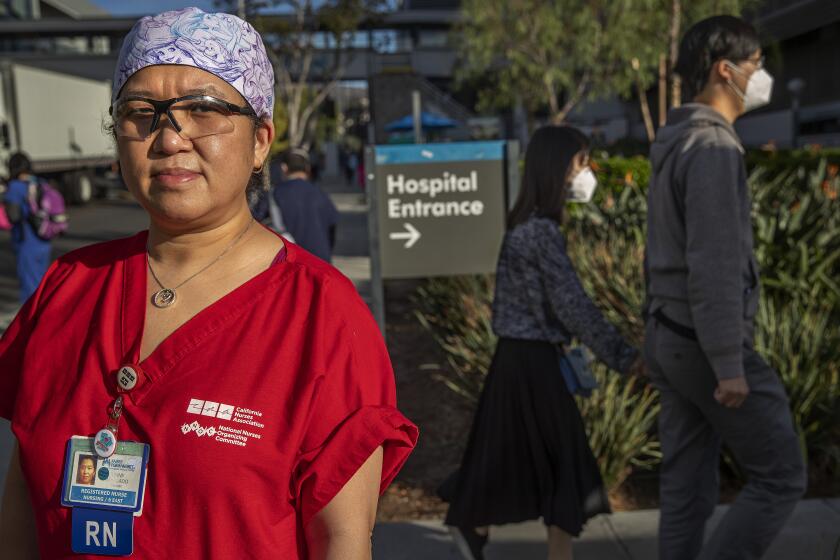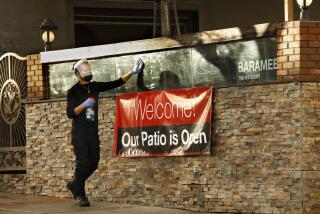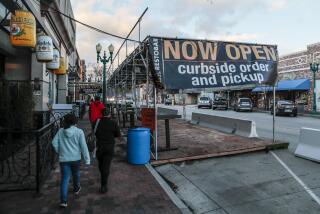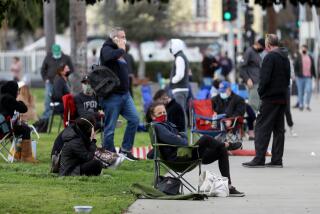California COVID-19 lockdown measures are met with skepticism but may offer the best hope
![Protesters carry "Screw you Greusome"[sic] and "Recall Gavin Newsom" signs at a Huntington Beach protest.](https://ca-times.brightspotcdn.com/dims4/default/14176e0/2147483647/strip/true/crop/3000x2000+0+0/resize/1200x800!/quality/75/?url=https%3A%2F%2Fcalifornia-times-brightspot.s3.amazonaws.com%2F6a%2F10%2Fb881a0d54d5dab6e264a129b316d%2Fla-photos-1staff-656698-me-curfew-protest-9-rcg.JPG)
- Share via
SAN FRANCISCO — With coronavirus cases surging to unprecedented levels in California, state and local officials are rapidly adding new restrictions in hopes of slowing the infection rate.
The new lockdown measures — which include a limited late-night curfew in most of California and the shuttering of outdoor restaurant dining in Los Angeles County — have been met with some skepticism by a public weary of months of limits on their movements.
Chefs and restaurateurs react to another shutdown of in-person dining amid L.A. County’s coronavirus surge. “We’re holding on for dear life,” one chef said. “There’s no aid in sight, nothing at all.”
How effective, some ask, will California’s new limited overnight stay-at-home order be in curbing the pandemic? The rule bans gatherings among people of different households between 10 p.m. and 5 a.m. and prohibits activities outside the home with members of other households, except for essential errands or essential work, in the counties of California in the most restrictive reopening tier.
The order, which went into effect Saturday, requires nonessential businesses to close or otherwise limit operations in the late-night hours. L.A. County on Sunday went a big step further, announcing that, starting late Wednesday night, outdoor restaurant dining will be suspended for at least three weeks.
There is no question new restrictions will hurt already struggling businesses and bring more misery to people already feeling isolated by the pandemic. But there is also evidence that the moves are logical as California enters a dangerous phase of the pandemic, with infections raging and the holidays approaching.
Gov. Gavin Newsom has announced a stay-at-home order affecting most of California.
Some experts and officials say they have good reason to believe that shutting down public places where people gather — in close proximity and without masks because they’re eating and drinking — can begin to drive down the growth in coronavirus cases.
It should be no surprise, as acting state public health officer Dr. Erica Pan outlined in her health order, that late-night activities are often related to social gatherings where there’s “reduced inhibition and and reduced likelihood” of wearing masks and staying distanced from friends and family.
“It’s because bad behavior goes up in the evening, at least as I recall from college,” Dr. George Rutherford, epidemiologist and infectious diseases expert at UC San Francisco, said at a campus town hall meeting last week.
In Europe, “it’s an observed phenomenon that curfews are associated with turnovers in these rates” of high growth in coronavirus cases, Rutherford said.
For example, France — which observed a quadrupling of daily coronavirus cases over the month of October — decided to enact even stronger measures to deal with its second wave: imposing a broader curfew, from 9 p.m. to 6 a.m., in the bigger cities; ordering the shutdown of nonessential businesses such as retail stores, restaurants and bars; and making masks mandatory for anyone age 6 and older, Rutherford said.
The coronavirus is infecting more Californians daily than at any other point in the COVID-19 pandemic, raising concerns about a peak in deaths by Christmas.
In recent weeks, new daily cases have fallen in half from the peak. Other similar measures elsewhere in Europe also seem to be successful, Rutherford said.
“This is good news,” he said, “and it again suggests that these kinds of measures are met with fairly rapid success, like within a couple of weeks.”
Actions that are still allowed in the overnight hours are activities that only involve people in one’s own household, such as perhaps a late-night stroll with a spouse, walking the dog, and conducting essential activities like buying food at the grocery store or picking up takeout food from a restaurant.
The action taken by the state comes in the midst of a COVID-19 pandemic spiraling out of control, spreading at a breathtaking rate not seen in California since the beginning of this pandemic. The virus is spreading faster than ever in California, and officials are already warning about the risk of running out of hospital beds in a matter of weeks.
That’s setting up California for a winter season of heartbreak, with the potential for deaths to begin soaring in the Christmas holiday season.
California has now recorded six consecutive days with at least 10,000 newly confirmed coronavirus cases a day, a stretch unlike any in the pandemic.
As of Sunday night, an average of nearly 11,500 coronavirus cases were being reported daily in the previous seven-day period — triple the rate of about a month ago. The average number of deaths reported rose by about 75% in just the past 10 days, from an average of 38 publicly disclosed deaths a day over the previous week to an average of 66 deaths a day for the seven-day period that ended Sunday.
More than 1.1 million Californians have been infected with the coronavirus, and more than 18,700 have died. Nationally, the average number of weekly deaths is at its highest point since May as infections surge in almost all the states.
California’s new limited overnight stay-at-home order is far more mild than the version imposed in Europe, and is less economically disruptive than a full-blown stay-at-home order in effect all day and all night, which in the springtime forced the closure of many businesses, including malls, barbershops and hair and nail salons, that are not being forced to close under this order.
It’s a more focused approach, said Dr. Mark Ghaly, California Health and Human Services secretary. It aims to prevent superspreading incidents among friends at night that can begin a chain reaction — infecting, perhaps, coworkers the next day, who bring the virus home to their families, some of whom might work with people who are highly vulnerable, such as residents of a senior care facility.
“This is going to help us stop the surge faster and avoid more severe actions,” Ghaly said.
“Oftentimes when people are gathering outside after 10 o’clock,” said Barbara Ferrer, L.A. County director of public health, “it’s because they’re in a situation where they’re socializing with others, probably not with people in their household. I would ask people: Use your common sense. It does make sense to limit activities where we’re with other people.”
A new surge of COVID-19 is battering Southern California, bearing down on exhausted healthcare workers, raising anxiety levels on hospital wards and stoking fears that there might not be enough staff and supplies for the difficult weeks ahead.
It’s possible that people may circumvent the spirit of the order by trading a late-night dinner at an outdoor restaurant with a dinner party at someone’s indoor private residence.
But it’s also possible the decision to shut down outdoor dining at restaurants late at night in most of the state will have the intended effect of shortening the duration of dinner parties, meaning fewer hours in which the virus can be transmitted.
The relatively rapid reopening of restaurant dining and bars in May and June in Southern California is a likely reason for the summertime surge that resulted in the state’s deadliest season thus far in the pandemic. The chance of transmitting the disease increases the longer you spend time with someone who is infectious. Longer social events are more like to result in superspreading incidents. Shortening such events could help drive down the number of cases and help to prevent the hospital system from becoming overwhelmed.
“A curfew will help prevent more people [from gathering] in the late hours of the night, where more high-risk activity may occur,” said Dr. Grant Colfax, director of public health in San Francisco.
Still the curfew has met with outrage in some quarters. A couple of hundred protesters gathered Saturday night at Huntington Beach Pier in defiance of the state’s coronavirus curfew, which went into effect at 10 p.m. “I think there are too many restrictions as is,” one protester said. Republican lawmakers also slammed the rules as unnecessary.
In L.A., restaurant owners fear they may not survive the latest shutdown of outdoor dining. Still, polls have shown Californians generally support COVID restrictions.
The coronavirus can infect others through coughing, talking and even breathing, and people can be highly contagious even when they feel healthy.
Essential workers who are exempt from the limited overnight stay-at-home order include workers at grocery stores and pharmacies and other retail establishments that sell food; workers at restaurant take-out and quick-serve food operations; healthcare workers; employees in the transportation industry; journalists; construction workers and technicians such as plumbers, electricians and exterminators; workers in hardware and building stores, consumer electronics, and technology-and-appliances retail; workers supporting e-commerce through distribution, warehouse and call center facilities; workers managing hotels; and workers in the entertainment industries, provided they follow public health guidance around physical distancing.
The latest maps and charts on the spread of COVID-19 in Los Angeles County, including cases, deaths, closures and restrictions.
The order would also require shortened hours of operation for nonessential retail stores that might otherwise have employees on hand to do inventory in preparation for crowds on Black Friday, as well as limit crowds of prospective shoppers who traditionally gather in late-night and predawn hours for some of the busiest shopping days of the year.
There are public health risks if crowds of Black Friday shoppers were to form, as they have in years past, ahead of the post-Thanksgiving Day sales.
Ghaly says the order stipulates that nonessential businesses must close down operations by 10 p.m. and not resume until 5 a.m. He acknowledged that the success of the order largely depends on Californians voluntarily adhering to it. Still, authorities will be able to enforce the rule as a state health order should they choose to do so.
“This is about coming together,” Ghaly said. “This is about us deciding to do some things ... so we can get this under control.”
More to Read
Sign up for Essential California
The most important California stories and recommendations in your inbox every morning.
You may occasionally receive promotional content from the Los Angeles Times.
